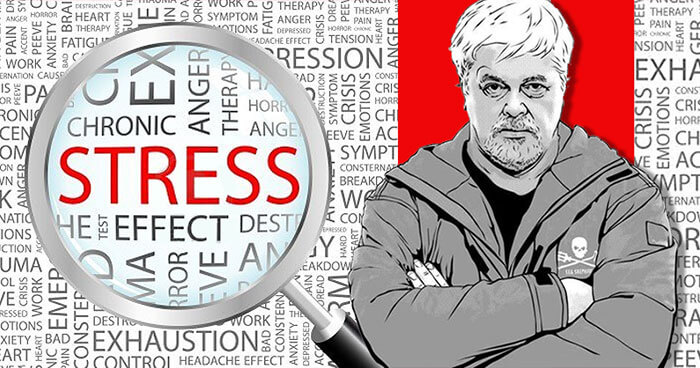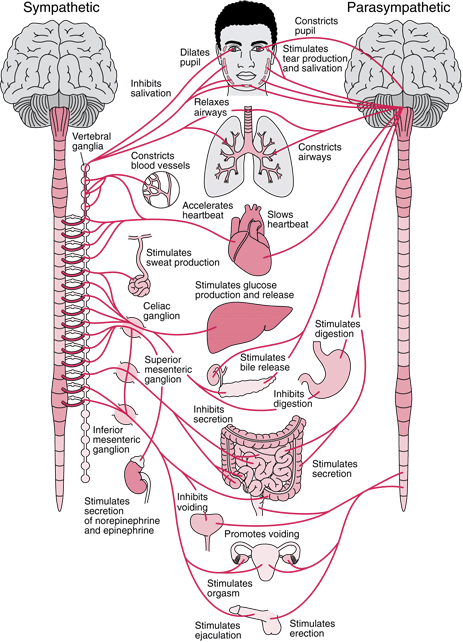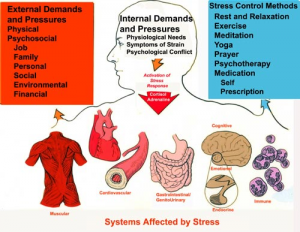
WHAT IS STRESS ?
Stress is a useful, dynamic state of tension that will boost your mind and body when you need to actively and quickly respond to extraordinary demanding situations. Hence the idea is not to rid our lives of stress altogether, but rather, to learn to operate at “optimum” levels of stress, to calm down when stress is done serving its purpose, and to find balance between challenges. Indeed, if the mind and body do not experience regularly the state opposite to stress -rest, relaxation, regeneration- the general well-being and health of a person can suffer some serious aches in the long run.
STRESS activates your senses for action, it prepares you to “flee or fight“, as evolution scientists like to put it. It can be defined as a powerful set of physiological and behavioral responses to a set of demands and pressures. Some of the demands and pressures you perceive come from outside (surveillance dispositive, laws, heavy work-load, aggressive threats, poor weather, noisy surroundings, lack of daylight…), some you might have “internalized” (education, prejudices, norms…), and some are more personal/internal and/or or related to your actual physical condition (ideals, personal views, illness, hunger…). These are often entangled. When they “reach” a critical level, very subjective, all these demands and pressures trigger your stress response.
REACTION AND OVER-REACTION
Together, your nervous and endocrine systems operate some switches and start “firing” their neurotransmitters, and specific stress hormones (epinephrine and norepinephrine, a.k.a. adrenaline and noradrenaline, cortisol…), which, networking between your organs via nerves and blood vessels, sensitize and prepare all systems for a joint action. Your heartbeat rises, your breathing becomes faster and shallower, your digestion and excretory functions are put on hold, memories are pushed aside to boost focus on one concern, your muscular skeletal system gets extra tensed and tonic, you mouth goes dry, you start to sweat, etc.
That is a LOT of ACTION. Normally, it all goes back to a calm pacific state once the danger is dealt with, mind and body rest and you regenerate after the extra struggle. But if/when all this ACTION goes on after the challenge has passed or if – as is the case – the fight or resistance is NEVER OVER and you cannot allow yourself to stop, your mind and body become at risk of turning into a devastated, depleted battlefield, with little resources for you (or others) to draw from, and a likely generalsensitization that will make you each time more vulnerable to the next attack… until you are the one unconsciously attacking yourself with this chemistry. And while the demands and pressures are probably still (out)there stressing you, your stress response also starts feeding on itself… And there you are, entering the dodgy state of CHRONIC STRESS…
CHRONIC STRESS
Symptoms of CHRONIC STRESS will quite logically and frantically reflect the havoc in all your body systems: tormented digestion (diarrhea for example) which in turn might lead to bad assimilation of nutrients, bad sleep (insomnia…), poor immunity (susceptibility to infections, allergies, auto-immune and inflammatory diseases…), cognitive disorders (bad memory, memory loss, poor concentration..), heart problems (high blood pressure, tachycardia.. ), emotional distress (depression, rage, panic attacks…), below ground libido and/or sexual dysfunctions, muscle strains, pathologies of the tendons, ligaments and joints (caused by some of the above + bad posture associated with chronic tensions), adoption and/or abuse of “toxic” and/or addictive substances (alcohol, tobacco, pain killers, sleeping pills, coffee… you name it) in attempts to self-regulate and/or compensate for difficulties in all the above areas, more vulnerability to addiction. So much for “survival” then…
Once the damages are done it takes long for the mind and body to recuperate (of course the longer the non-stop stress period the worse). Better then to think about how to balance your forces AS YOU GO. If/when you understand better your stress response and become more aware of how efficiently or badly it affects you, you can start having ideas on how to prevent damage to yourself and yes, to others (whom you might be neglecting or shouting at, or taking ill advised, impulsive decisions for). You are welcome to share these ideas ! Here are some known tricks and strategies I have used for myself and, sometimes others, with positive results.
SWITCH OFF the STRESS RESPONSE WITH DEEP (ABDOMINAL) BREATHING
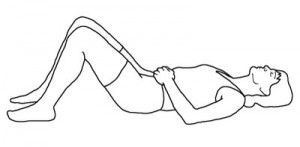
The part of the nervous system that is specifically involved with the stress response is the autonomic nervous system (a.k.a involuntary) responsible for the automatic (without thinking) control of basic essential and visceral functions, which I have described above (respiration, heart rate, digestion…). The autonomic nervous system is comprised of two antagonist systems, that is, two distinct networks of nerves connecting the same organs but with opposite effects: the sympathetic nervous system stimulates action as in the stress response, where it prevails, while the parasympathetic system is responsible for rest and regeneration (both do so by inhibiting or stimulating this or that, see image). The nerve branches of the sympathetic system exit the spine at the thoracic and lumbar vertebras, while the nerve branches of the parasympathetic exit the spine at the cervical and sacred vertebras.
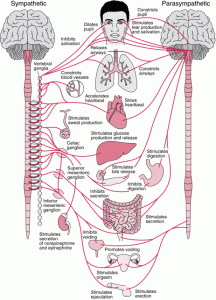
In stress response, the sympathetic system is king. As I have said, breathing is faster and shallower. The muscular work/effort of breathing (which always involves various principal and accessory muscles) tends to be concentrated in the shoulders and thorax, with the diaphragm not going down very low in the abdomen. Next time you feel stressed, anxious, observe what is happening with your breathing, what do you notice? (notice, for example, how your tummy is sticking in and not ballooning out like a kid’s). We cannot control the fact that we breathe to be alive -that’s where the autonomic nervous system is involved- but we can have control over HOW we breathe thanks to our central nervous system and brain.
To switch to the parasympathetic system, that will favor a state of relaxation, you can try deep abdominal breathing. Lower the shoulders (=lower the guard !), lie down if you can, place a soft hand on your abdomen, another one on the thorax/heart (feel the heart pounding and later feel how it slows down). Breathe in through the nose, extend your diaphragm to the max, let air in all the way DOWN to the most remote places of your obscure belly, let your abdomen fully BALLOON. Breathe out (empty slow the balloon) through the mouth until there is no air left down there. Then, naturally, just like a pump, fill your belly up again. Think only of what you are doing : breathing in and out, and FEEL what it feels like. What does it feel like in the abdomen when it stretches to the shape of a balloon ? What does it feels like to have that “knot” at the solar plexus slowly soften, untie ? There in your plexus, travels a very important nerve of the parasympathetic system, called the vagus nerve. The movements of your deep diaphragmatic breathing will likely stimulate this nerve and help you switch systems, from sympathetic to parasympathetic. Meanwhile, the fact that you are no longer breathing so much in the thorax will lessen the stimulation to the nerve branches of the sympathetic system that exit at these vertebras and also contribute to that switch. Slower heartbeat, loose breathing, that chilly feeling, laid-back stomach sounds (indicating a restart of peristalsis) all signal that you have made it to a quieter state.
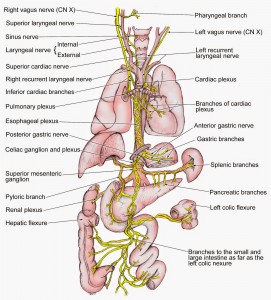

Practice on yourself whenever necessary and in more quiet times, so that you are ready when it IS important that you come down. Practicing on yourself will then allow you to practice on someone else who might need your help to achieve this switch. It is a very caring hack that requires patience, trust, confidence. You do not impose a way of breathing to someone, you create a space, conditions and contact that are welcoming for them to find their way to relaxation through deep breathing. I have practiced with success on myself and people who showed up at my massage table with a lot of anxiety.
OTHER SUGGESTIONS AND TIPS
– Break it down! You might want to break down whatever “THE” great MISSION into sequences of smaller missions, for a start, so you can identify “cycles” more easily, and make room for rest/recuperation after completion of each task.
– Identify and analyze demands and pressures both external and internal and make all possible changes immediately AT HAND to alleviate these. It might not be easy to influence which scumbag is going to be at the head of a state or an institution, but it is probably in your power to not let yourself starve while thinking about it. Don’t add to a long list of stressors outside by neglecting yourself and/or your surroundings. Take all the “stones” you think are no “big deal in comparison to the importance of the cause” out of your boots NOW so you can have more strength to actually climb the mountain. Meditate to identify which external pressures and demands you’ve unconsciously taken to be yours and can or should discard, spot pressures and demands that actually belong to the past (but for some odd reason you behave like they are still on), reflect upon YOUR interpretations of stressful situations, modify them so they suit you better, and eventually make your mind more caring and comfortable for your SELF, that needs not be oppressed further.
– Acknowledge your emotion(s) and others’ emotion(s) in stressful situations. ANXIETY, ANGER, and SADNESS are the three main emotions associated to the state of stress. Emotions are great, they are vital, so once again, it’s not about getting rid of them, it’s about balance. Understanding emotions, so that they contribute to a vibrant life rather than become a pain (to you and others’) deserves an article which I will write another day. IMHO, one advice that can go a long way is to acknowledge the emotions that come knocking at your door during stress. It sounds easy, but it is in fact quite an art, and most people are not very good at it. And many cannot even tell emotions apart, anger or fear, or sadness… Work on that. Learn to be able to say to yourself (or to someone if necessary -acknowledging emotions actually takes a lot of heat off interpersonal conflicts): “Oh, this is anger – Hello anger – You want to cross me ? Sure, ok, just get across then ! ” Kind of “data must flow” applied to emotional life. It is a 100% non judgmental. ANGER is ANGER, SADNESS is SADNESS, neither good or bad. Resist them emotions, and they’ll bother you for hours. Welcome them, and you’re done with them in 20 minutes.
– Install and SUSTAIN regular eat / sleep / and other life patterns. Most things in the body work hand in hand, alternating with their antagonist and counterparts. It is like a dance, you don’t want all your systems always stepping on each others feet, conflicting, or becoming shy on you or shutting down, you want them to settle a little bit as to when they come in and when they come out to do what is is they have to do for your to be well. Think CYCLES, complete.
– Move your body where it has not been moved and relax that which has been tensed too long.
– Practice relaxation techniques or disciplines that will favor the state antagonist to stress, like Chi-Kung, yoga, mediation, breathing techniques, or other not necessarily “oriental”. The deep tummy breathing described above can be practiced daily. Be aware that SPORTS (as in tennis, or running, or squash) might still solicit your active side. Although sports certainly have good effects (like building stamina or “emptying the mind”) they won’t necessarily bring your system to COOL DOWN. Getting a massage is also a good idea, or getting someone to gently scratch your back…
Disclaimer: I am here to share what I know, what I have experienced and read, but I am not a qualified doctor ! Do consult with one in due time if you experience stress related disorders that you feel might be endangering your physical and/or mental health.

